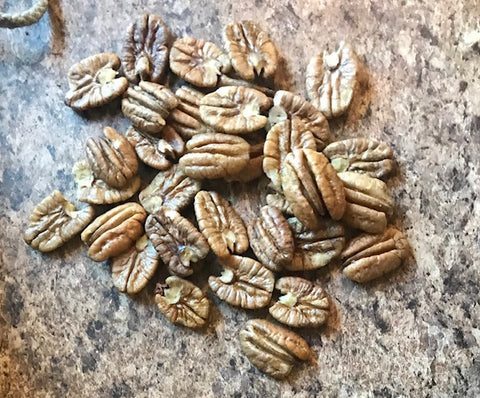
Whether you like enjoying a slice of classic pecan pie or prefer to munch on pecans on their own, there’s no denying that these nuts are a real treat to enjoy. Not only do they have a distinct, rich, buttery, and nutty flavor, they are also very nutritious and good for health. Pecans have over 1000 named varieties. The most popular ones are named after American Indian tribes by the USDA. Pawnee, Witchita, Cheyenne, and Western Schley to name a few of the important pecan varieties Many people ask about what wild pecans are and how they differ from other varieties.
The wild pecans are native pecans that were discovered in the 16th century by European explorers in the regions of North America but had long been a staple food source for the native Americans. The wild and native type is nuttier in flavor, while newer varieties have more size, thinner shells and require more management to grow.
Wild Native Pecan Trees
The native pecan trees are found along the creeks and river banks in deep soil. The trees themselves can be over 200 years old and tower above everything in the area. Wild pecan trees are very tall and very old. Since they were planted naturally by animals or by rivers flooding, they are very random in spacing and layout. Planted pecan orchards, on the other hand, are spaced 30 feet between trees and the rows.
The Pecan Shell
Wild pecans have a thicker shell that’s hard to crack. The name ‘pecan’ came from the Algonquin language, meaning ‘a hard to crack stone.’ This is the tree's natural protection from animals. Now, many varieties of pecans have been bred to have thin shells. Some of them are paper-like thin shells that you can easily break with a snap of your finger. But the meaning of the word pecan is proof that wild pecans have a harder and thicker shell that requires some effort to break.
The Pecans Appearance
Wild and native pecans vary greatly in size and shape from tree to tree. A typical San Saba native pecan can have up to 150 nuts per pound and as little as 70 nuts per pound. The average is around 100 nuts per pound on a typical year. Very few natives are irrigated and rely on the overflows from summer rains for irrigation. 
Newer USDA varieties can be twice as large as native pecans. Most of the Improved varieties Millican Pecan sells are below 75 nuts per pound and since they are all one variety, they are uniformed in size and shape.
The Native Pecans Texture
Since the native pecans not only have a harder shell and are smaller, that makes it extremely difficult to hand shell without specialized equipment. Due to the small size, more effort is required to crack and peel the nuts. Once inside, the nut meats are golden in color and vary in size and shape. Overall, the pecan nut meat will be similar to named variety in texture, smaller in size, and full of flavor. The best pecan pieces to use as ingredients come from native pecans. Most pecan candies and pecan pralines are made with native pecan pieces. These wild native pecans are an excellent choice to use in pecan pies or chopped up for salads.
Resistance
Pecan varieties differ in resistance to disease, drought, and other climatic conditions. The native pecan varieties are resistant to common diseases, such as Pecan Scab because of the genetic variability. New varieties differ in resistance. Some are susceptible to common diseases while others are tough against it.
However, most wild pecans are resistant to high temperatures. The native pecans variety found in warmer regions like Texas can withstand high heat, which explains why they grow there.

